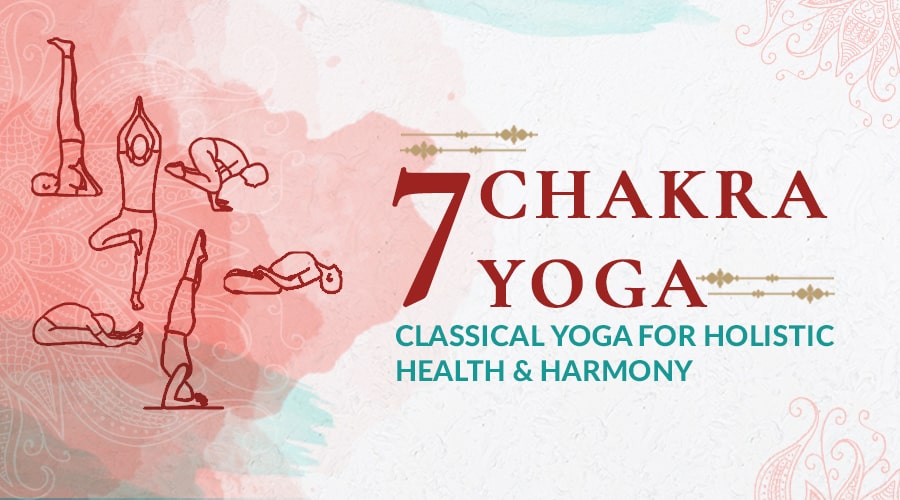Did you know that there is a powerful energy hard at work maintaining the delicate balance of all things; including you. This life-giving force flows through core energy centers in your body, known as chakras, revitalizing your well-being and restoring a sense of wholeness.
However, stress from work or an unhealthy lifestyle can block these getaways, causing an internal imbalance that negatively impacts your emotional stability and physical health. Yet, just like the moon controls the tides, we too have the power to guide and direct this energy. One way we can do this is through the practice of chakra yoga.
By practicing yoga poses for chakras, we can harness this energy and bring healing and harmony within. Read on to discover what chakra yoga is, how it works, and how to practice classical Hatha Yoga poses for chakra balancing and holistic health.
What Is Chakra Yoga?
Chakra yoga is the practice of classical Hatha Yoga poses in a downward-descending order to restore balance to the body’s energy centers, or chakras.
Chakras are energy points located along the spine, starting at the base and running upwards to the crown of the head. The seven major chakras from the top down are:
- Sahastrara Chakra – Crown Chakra
- Ajna Chakra – Third Eye Chakra
- Vishuddha Chakra – Throat Chakra
- Anahata Chakra – Heart Chakra
- Manipura Chakra – Solar Plexus Chakra
- Svadhishthana Chakra – Sacral Chakra
- Muladhara Chakra – Root Chakra
Let’s dive a little deeper into how chakra yoga actually works.
How Do You Activate Your Chakras with Yoga?
Yogic philosophy teaches us that human beings have three bodies: the physical body, spiritual body, and astral (energetic) body. Prana, also known as life-force energy, interconnects these three bodies, powering vital functions like moving, thinking, digesting, and breathing.
Prana flows through the energy body much like blood does in the physical body. But, instead of travelling through veins and arteries, it moves through an intricate network of energy pathways known as nadis.
We absorb prana into our bodies through these channels by breathing. Practicing breathing exercises and yoga poses in a natural, downward-descending order can improve and expand the flow of prana through the chakras. This also creates space for powerful astral energies, such as the Kundalini Shakti, to rise upward.
For example, chakra yoga poses like Half Bridge Pose and Shoulderstand help direct energy to the Throat Chakra, located in the center of your larynx at the base of your throat.
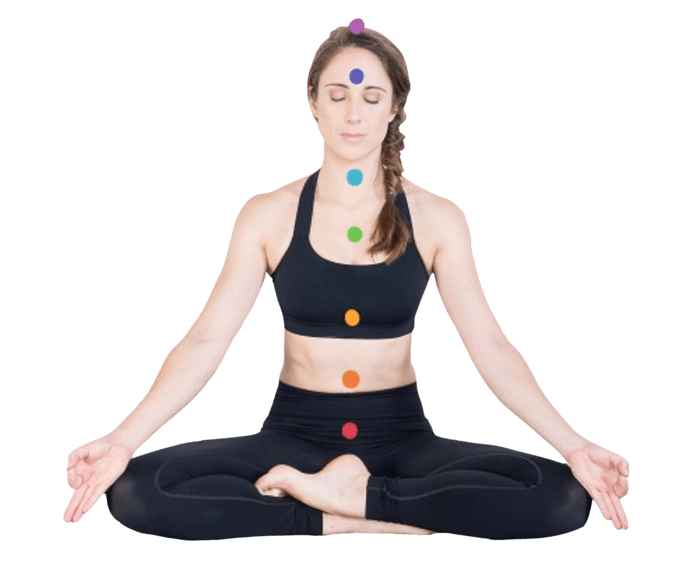
Activating this energy center stimulates the physical and subtle responses which govern your ability to communicate. This can boost your confidence and even improve the functioning of your thyroid gland.
What Is Chakra Yoga Good for?
Yoga poses for chakras regulate and balance the flow of energy in your body, promoting emotional, spiritual, and physical well-being. Along with chakra meditation and affirmations, these energy-channeling asanas can benefit your life in the following ways:
Emotional Healing
Chakra yoga takes a holistic approach to healing, addressing not only the physical body but also the energetic and emotional aspects of your being.
Each chakra is associated with specific emotions and experiences. The Sacral Chakra, for instance, governs your desires, creativity, and sexual energy. Therefore, stimulating prana here can balance these aspects of your life.
Improved Physical Health
Aside from emotions, chakras are linked to specific glands and organs in the physical body. This means that the energies from the astral body and the physical body influence each other and their processes.
Practicing yoga poses for chakras has an immediate effect on internal glands and organs, increasing and balancing their functions. As a result, yoga can be used to stimulate the body’s self-regulating and self-healing capacity and restore to a healthier state of homeostasis.
Personal & Spiritual Growth
Chakra yoga provides a powerful pathway for spiritual exploration and growth. In a chakra balancing course, you learn how to reach beyond the physical and expand your consciousness. This can open the door to deeper states of self-awareness.
In addition, it can set you on a powerful journey of self-discovery, which enables you to step into your highest potential and lead a more fulfilling and purposeful life.
Which Style of Yoga Is Best for Balancing Chakras?
Classical Hatha Yoga focuses on asana and pranayama practice to purify the body and mind and prepare you for further spiritual practices. As a result, we practice classical asanas according to the core principles of Hatha Yoga: following the laws of nature and principles of minimal action.
The best yoga practice for chakras is one that creates the most natural and effortless flow of prana through the body. A chakra yoga asana practice according to Hatha Yoga principles follows the downward movement of Apana Prana. Apana prana is responsible for regulating the outward flow of prana from the body and governs elimination of physical wastes and toxins.
So, the practice of yoga asanas should be structured so that chakras and their corresponding organs and glands in the physical body are stimulated in a top-to-bottom sequence. This ensures a holistic activation of the entire body and proper elimination of wastes and toxins.
Classical Hatha Yoga Poses for Chakra Activation & Balance
Below is a short, well-balanced chakra yoga sequence for energy activation and holistic health. Each of these asanas is assigned to a specific chakra, helping activate and balance the prana in the area.
Following Hatha Yoga principles, we start from the Crown Chakra and work our way downwards to the Root Chakra. These yoga poses for chakras are accessible to both beginners and more advanced practitioners. However, be mindful of your limitations and always practice in a steady and comfortable manner.
Crown & Third-Eye Chakra: Headstand (Shirshasana)
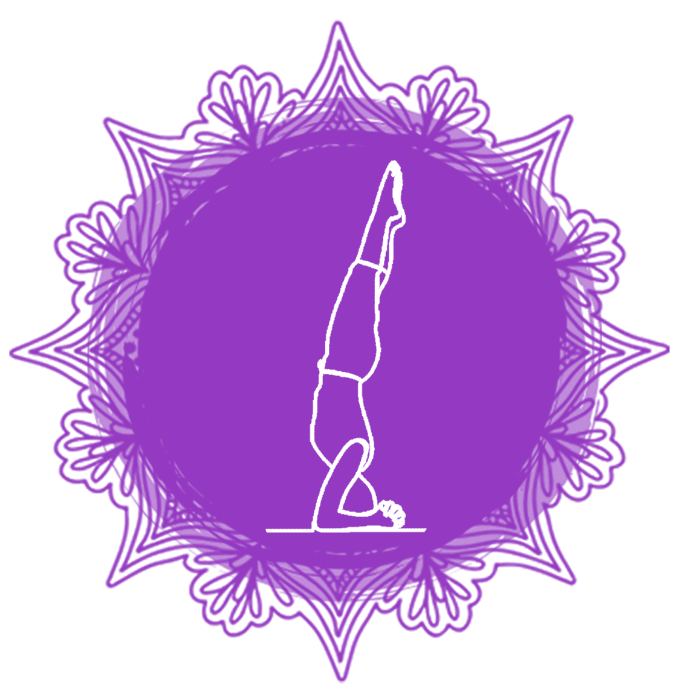
Headstand is a foundational posture in Hatha Yoga, offering numerous benefits for the body and mind. Practicing this yoga inversion safely can activate the Crown and Third-Eye Chakras, improving the overall function of your pineal, pituitary, and hypothalamus glands.
How to:
- Sit on your knees and grab onto your elbows to measure the distance of your base.
- Then, lower your arms to the ground so that they are in line with your shoulders.
- Keeping the elbows there, interlace your fingers so that your arms form a triangle and keep your elbows in by your sides.
- Lower your head onto the ground and place the back of your head in your cupped hands.
- Curl your toes, straighten your knees, and push your hips up toward to the sky.
- Start tiptoeing toward your shoulders and then bring the right knee into your chest, followed by the left. Keep your spine straight.
- Take a deep breath in and raise your legs to the sky. Straighten them upward and keep your feet slightly in front of you to avoid arching your back.
- Focus on something at eye level and take a few relaxed breaths, holding the posture as long as comfortable.
Duration:
- Beginners: 10 seconds–1 minute
- Intermediate: 1–5 minutes
- Advanced: 5–15 minutes
Alignment:
- Only aim for a shoulders-hips-ankles alignment if you can enter and exit the pose with ease.
Beginner-Friendly Variation:
- Half Headstand
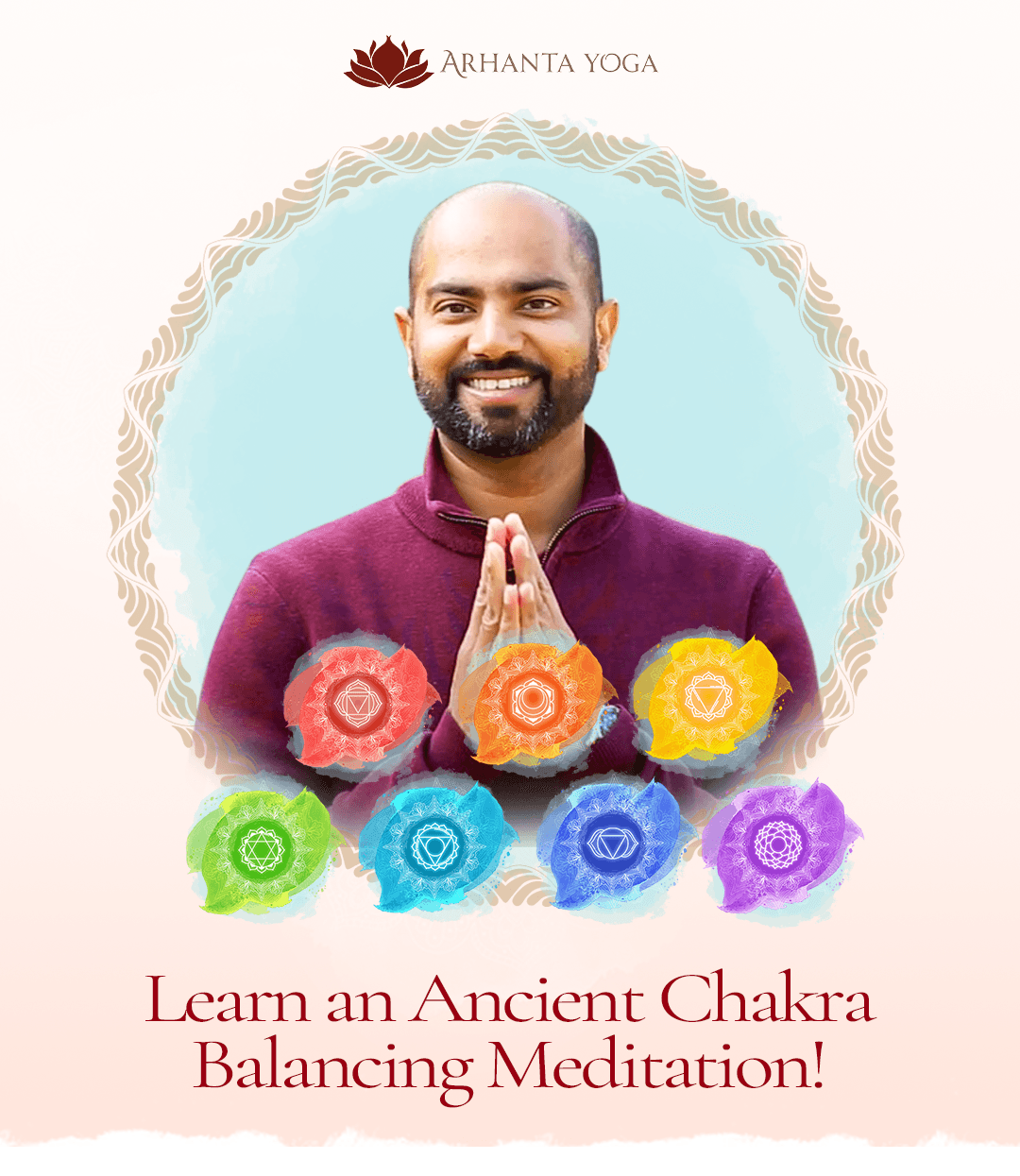
Sign up for our newsletter and get free access to an exclusive guided meditation with master teacher Ram Jain.

Throat Chakra: Shoulderstand (Sarvangasana)
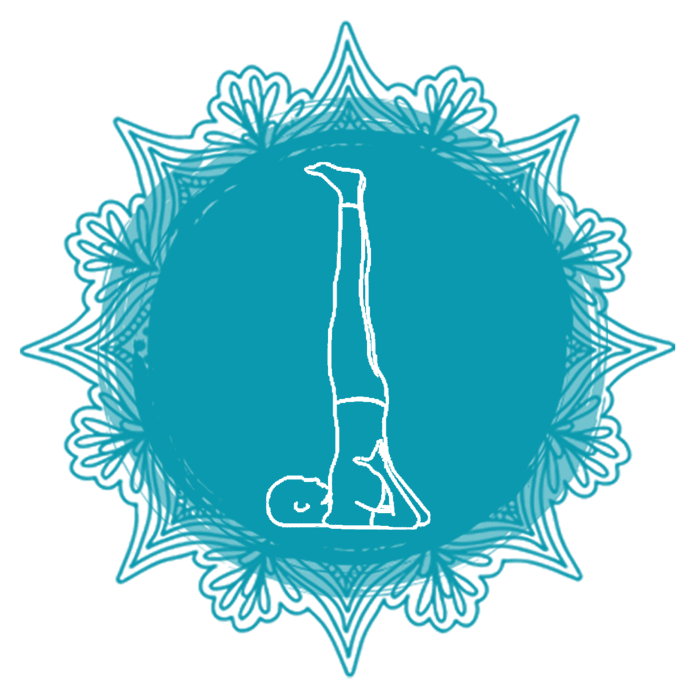
Shoulderstand is a powerful yoga pose for chakra balance and body-mind connection. Holding this inversion for several minutes stimulates the Throat Chakra, which improves the functioning of your thyroid issue and parathyroid glands, balancing your metabolism.
How to:
- Lying on your back, bring your feet together and arms beside you.
- Keep your head and neck on the floor, and as you inhale, bring both legs up to a 90-degree angle.
- Raise your hips toward the ceiling, place your hands on your hips, and gradually move them up toward your shoulder blades.
- Bring your chest toward your chin and lift your hips as high as you can.
- Keep your back supported with your hands and make sure that your feet are straight above your head.
- Take slow breaths, directing your focus toward the throat area.
Duration:
- Beginners: 30 seconds–1 minute
- Intermediate: 1–3 minutes
- Advanced: 3–6 minutes
Alignment:
- Try your best to straighten your back as much as you can. If needed, bring your hands closer to your shoulders and move your elbows a little closer together.
- Make sure that your feet are directly above your head, and most of your weight is on your shoulders.
- Your neck should not be carrying your body weight or pressing into the floor. Maintain a natural curve in your neck by squeezing your shoulder blades together. You can also place a folded blanket under your shoulders to release pressure on your neck.
- Relax your legs and feet while holding this position (See How to Practice Inversions Safely for more tips).
Heart Chakra: Fish Pose (Matsyasana)
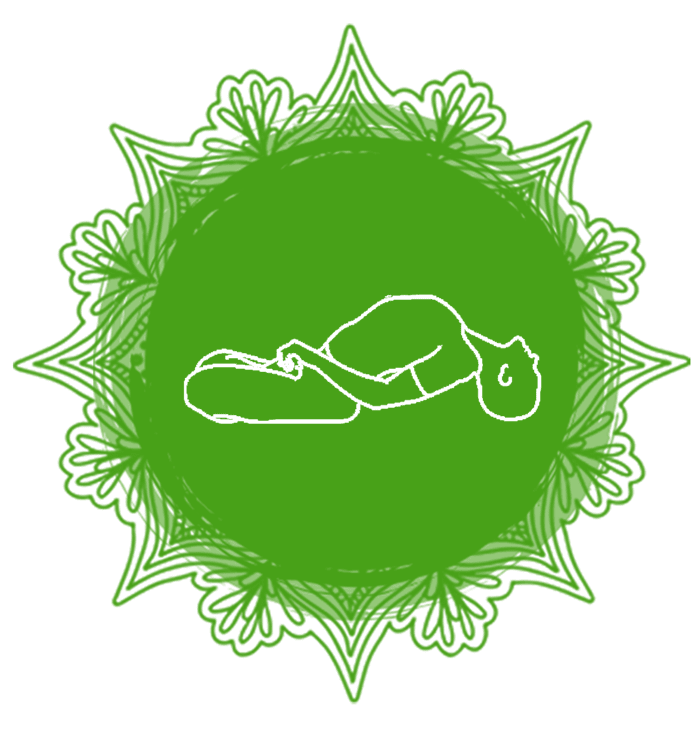
Fish Pose is an effective yoga pose for the Heart Chakra. This reclining chest-opener stimulates the Heart Chakra, as well as the heart, lungs, thymus, and lymph glands. Practicing this asana can also bring balance to your emotions and boost your immune system.
How to:
- Lie flat on your back with your legs and feet together.
- Position your hands beneath your hips, with palms facing down and elbows slightly outwards.
- Gaze toward your feet and inhale, shifting your weight onto your elbows.
- Try to bring your elbows as close to each other as you comfortably can.
- Inhale again, open up your chest, and tilt your head back until the top of your head rests on the floor.
- Take slow, deep breaths to expand your lungs and open your chest.
Duration:
- Beginners: 30 seconds–1 minute
- Intermediate: 1–2 minutes
- Advanced: 2–4 minutes
Alignment:
- Check that your hands are below your hips. If they're too high or too low, it will throw off the pose's alignment.
- Make sure your head is resting on the floor.
- Don't put weight on your head. It should lightly touch the floor and your elbows should support your body.
- Relax your feet and legs, and open up your chest as much as you can.
Solar Plexus Chakra: Seated Forward Bend (Paschimottanasana)

We practice Seated Forward Bend to balance the Solar Plexus Chakra. The gentle forward folding movement stimulates the third chakra, balancing functions of the stomach, gallbladder, liver, spleen, and pancreas. The squeeze-and-release effect of this pose also helps improve digestion and eliminate toxins.
How to:
- Sit with your legs together, or hip-distance apart in front of you.
- Reposition yourself so your body weight is high up on your sitting bones.
- Take a deep breath in and stretch both arms up toward the ceiling, keeping them in line with your ears.
- As you breathe out, hinge at the hips and reach forward.
- As soon as you come to your maximum, allow your back to round and reach your nose close to your knees. Hold onto your toes, ankles, or shins.
- Rest your elbows on the floor.
Duration:
- Beginners: 1–2 minutes
- Intermediate: 2–4 minutes
- Advanced: 4–10 minutes
Alignment:
- Make sure you sit up tall on your bottom without rolling backward.
- Keep your arms and shoulders relaxed and use your breath to go deeper into the pose. Don't use your arms to pull yourself down forcefully.
- See our Guide to Safe Forward Folds for more alignment tips.
Sacral Chakra: Easy Crow Pose (Sukha Kakasana)
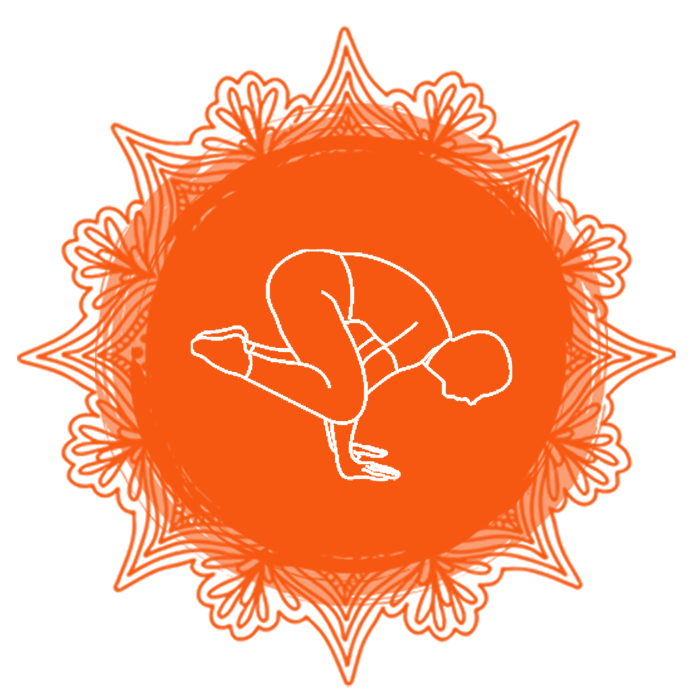
Easy Crow Pose opens and stimulates the Sacral Chakra. This energy center is responsible for your creativity and the healthy functioning of our bladder, kidneys, and reproductive organs. By practicing this chakra yoga pose, you can stimulate prana here and improve these aspects of your life.
How to:
- Sit on your toes, keeping your heels close together and your knees apart.
- Put your elbows in the space between your knees where they bend.
- Keep your hands slightly higher than your knees, with your fingers spread wide and pointing inward a bit.
- Shift your weight forward and place your palms on the floor, about shoulder-width apart.
- Look at a spot on the floor about half a meter in front of your fingertips, and slowly lift one foot off the floor at a time.
- Pull both feet toward your hips and continue to concentrate of the point to maintain your balance.
Duration:
- Beginners: 10–20 seconds
- Intermediate: 20–40 seconds
- Advanced: 40 seconds–1 minute
Alignment:
- Keep your core engaged by lifting your heels toward your buttocks.
- Ensure your back is slightly rounded.
- The angle between your hand and forearm should be 90 degrees. If it is not, lift your wrist slightly higher by placing a blanket underneath the lower part of your palm. This takes some pressure off the wrist. (See How to Prevent Yoga Wrist Pain for more tips.)
Root Chakra: Tree Pose (Vrkshasana)
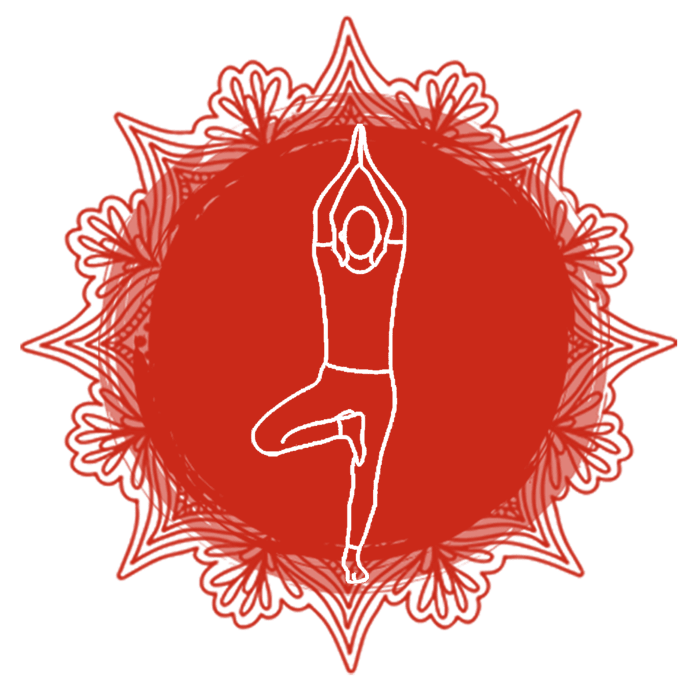
Tree Pose grounds you into the earth and balances your foundational energy center at the base of your spine. By activating your Root Chakra, this gentle balancing asana also stimulates its related organs and glands, such as your large intestines and adrenals.
How to:
- Stand tall on your mat with feet together.
- Raise your hands above your head and place your palms together, keeping them in line with your forehead.
- Inhale, raise your right foot and place it against your left inner thigh.
- Keep your focus on a point slightly above eye level (approximately 2 meters away), and breathe evenly.
Duration:
- Beginners: 30 seconds–1 minute on each side
- Intermediate: 1–3 minutes on each side
- Advanced: 3–5 minutes on each side
Alignment:
- Reach your hands up toward the ceiling, making sure your thumbs are in line with your forehead.
- Bend your elbows slightly and lift your shoulders just a little.
- Let the knee of your upper leg point sideways, turning your leg at the hip without lifting your hip.
- Keep your back in its natural curve and avoid slouching in your lower back or puffing out your chest.
- You can also place your raised foot against your standing leg's ankle or calf.
Final Thought
Chakra yoga takes a holistic approach to healing. It considers our physical body, energy, and emotions as interconnected parts of who we are. So, to balance our physical and energy bodies equally, we need to practice yoga poses according the principle of sthira sukkham asanam (steady and comfortable asana state).
Through this state of minimal action, we create movement and compression in our physical bodies which promotes a balanced nervous system, revitalizes our organs, and restores harmony to the chakras.
By understanding and applying these foundational principles of yoga, we can propel our practice forward and reach holistic health and well-being.

Sign up for our newsletter and get free access to an exclusive guided meditation with master teacher Ram Jain.


